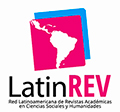Features of translation language and the terms “safety” and “security” in aviation language
DOI:
https://doi.org/10.11606/issn.2317-9511.v35i0p49-76Keywords:
Corpus-based Translation Studies, Corpus Linguistics, Terms of AviationAbstract
Translation language carries out its own features which are present in its nature, independently and autonomously. This article approaches eventual typical translation traits and the Portuguese term “segurança”, along with its translations “safety” and “security” into English, and their uses and senses, in aviation language. The theories and methodology used are those of Corpus-based Translation Studies (BAKER, 1993, 1995, 1996) and Corpus Linguistics (BERBER SARDINHA, 2000, 2004). Portuguese texts and their translations into English were analyzed. For compiling the parallel corpus we used journals in the aviation field (Aviation in Focus, 2006; Conexão Sipaer, 2009). The translated texts showed characteristics of explicitation, simplification and normalisation. They contained sentence reductions, omissions, explanations and adequacies addressed to the target reader. The analysis of the terms discussed their concepts and presented several well-established translation forms. Our results are intended to offering considerations regarding the role of translation features. contributing to a better understanding of these terms. As well as orienting the search for equivalent forms in English, towards inaccuracy and ambiguity matters, directing translators and professionals who make use of aviation language.
Downloads
References
AVIATION IN FOCUS, Journal of Aeronautical Sciences. Porto Alegre, RS. Disponível em: <http://revistaseletronicas.pucrs.br/ojs/index.php/aviation>. Acesso em: (27/01/2017).
BAKER, M. Corpus Linguistics and Translation Studies: Implications and Applications. In: BAKER, M.; FRANCIS, G.; TOGNINI- BONELLI, E. (org.). Text and Technology: In honour of John Sinclair. Philadelphia, Amsterdam: John Benjamins, p. 233-250, 1993.
TOGNINI- BONELLI, E. (org.). Corpora in translation studies: an overview and some suggestions for future research. Target, Amsterdam, v. 7, n. 2, 1995, p. 223-243.
TOGNINI- BONELLI, E. (org.). Corpus-based translation studies: the challenges that lie ahead. In: SOMERS, H. (Ed). Terminology, LSP and translation studies in language engineering: in honour of Juan C. Sager. Amsterdam: John Benjamins, 1996. p. 177-186.
BARROS, L. A. Curso básico de terminologia. São Paulo: USP, 2004.
BERBER SARDINHA, A. P. Linguística de corpus: histórico e problemática. DELTA: documentação de estudos em linguística teórica e aplicada, São Paulo, v. 16, n. 2, p. 323-367, 2000.
BERBER SARDINHA, A. P. Linguística de Corpus. Barueri: Manole, 2004.
BOCORNY, A. E. P. Panorama dos estudos sobre a linguagem da aviação. Revista brasileira de linguística aplicada, Belo Horizonte, v. 11, n.4, p. 963-986, 2011.
CABRÉ, M. T. Terminología: Representación y comunicación. Una teoria de base comunicativa y otros articulos. Barcelona: Universitat Pompeu Fabra, IULA, 1999.
CAMARGO, D. C. Tradução e tipologia textual. Tradução e Comunicação. Londrina, v. 16, p. 46-52, 2007.
CONEXÃO SIPAER, Revista Científica de Segurança de Voo. Brasília, DF: IBICT. Disponível em: <http://inseer.ibict.br/sipaer/index.php/sipaer>. Acesso em: 02 dez. 2017.
COSTA, C. E. P. Análise de um corpus de textos de segurança da aviação à luz dos Estudos da Tradução Baseados em Corpus: os termos 'segurança', 'safety' e 'security'. Dissertação (Mestrado). Departamento de Letras Modernas da Faculdade de Filosofia, Letras e Ciências Humanas da Universidade de São Paulo, São Paulo, 2017.
COSTA, C. E. P.; CAMARGO, D. C. Estudo de termos simples e expressões fixas baseado em um corpus de segurança da aviação. Journal of Aeronautical Sciences, Porto Alegre, v. 7, n. 1, p. 4-12, 2016.
CRYSTAL, D. English as a global language. Cambridge: Cambridge University Press, 1997.
FEDERAL AVIATION ADMINISTRATION. Doc 2042 Aircraft Systems Information Security/Protection Documents. Washington. Disponível em: <https://www.faa.gov/regulations_policies/rulemaking/committees/documents/index.cfm/document/information/documentID/2042>. Acesso em: 10 ago. 2017.
HOFFMAN, L. Conceitos básicos da linguística das linguagens especializadas. Cadernos de Tradução, Porto Alegre, n. 17, p. 79-90, 2004.
INTERNATIONAL CIVIL AVIATION ORGANIZATION. Doc 9835: Manual of Implementation of Language Proficiency. Montreal. Disponível em: <https://skybrary.aero/bookshelf/books/2497.pdf>. p. 01-150. Acesso em: 15 maio 2017.
KRIEGER, M. DA G. Diversificação e unificação em terminologia: Fundamentos para a terminologia do Mercosul. Tradterm. São Paulo, v. 7, p. 95-110, 2001.
MAGALHÃES, C. Pesquisas textuais/discursivas em tradução:o uso de corpora. In: PAGANO, A. (Org). Metodologias de pesquisa em tradução, Belo Horizonte: FALE-UFMG, p. 93-104, 2001.
NEWMARK, P. Approaches to translation. Oxford: Pergamon Press, 1981.
SINCLAIR, J. Corpus, concordance and collocation. Oxford: Oxford University Press, 1991.
TAGNIN, S. E. O. O jeito que a gente diz: combinações consagradas em inglês e português. Barueri: Disal, 2013.
TOURY, G. Descriptive translation studies and beyond. Amsterdam: John Benjamins, 1995.
ZAVAGLIA, A. Linguística, Tradução e Literatura: observando a transformação pela arte. Alfa: Revista de Linguística. São José do Rio Preto, v. 48, n. 1, p. 99-117, 2004.
Downloads
Published
Issue
Section
License
Copyright (c) 2020 Carlos Eduardo Piazentine Costa

This work is licensed under a Creative Commons Attribution-NonCommercial-ShareAlike 4.0 International License.
Autores que publicam nesta revista concordam com os seguintes termos:
- Autores mantém os direitos autorais e concedem à revista o direito de primeira publicação, com o trabalho simultaneamente licenciado sob a Licença Creative Commons Attribution BY-NC-SA que permite o compartilhamento do trabalho com reconhecimento da autoria e publicação inicial nesta revista.
- Autores têm autorização para assumir contratos adicionais separadamente, para distribuição não-exclusiva da versão do trabalho publicada nesta revista (ex.: publicar em repositório institucional ou como capítulo de livro), com reconhecimento de autoria e publicação inicial nesta revista.
- Autores têm permissão e são estimulados a publicar e distribuir seu trabalho online (ex.: em repositórios institucionais ou na sua página pessoal) a qualquer ponto antes ou durante o processo editorial, já que isso pode gerar alterações produtivas, bem como aumentar o impacto e a citação do trabalho publicado (Veja O Efeito do Acesso Livre).







